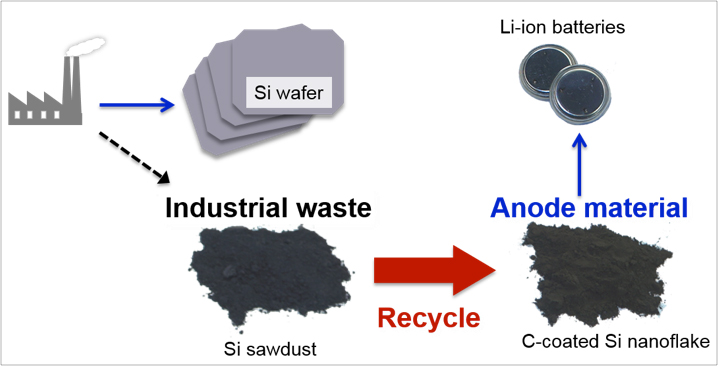Silicon sawdust could help power your phone

Researchers from Japan’s Tohoku University and Osaka University have used the waste material from the production of microchips to produce anodes for lithium-ion batteries.
Making silicon wafers with high purity for electronics is expensive and energy consuming, and 50 per cent of the material essentially ends up on the floor as ‘silicon sawdust’. Traditionally, this has been discarded as industrial waste, but the Japanese engineers have developed a technique to breathe new life into the silicon.
Described in the journal Scientific Reports, the method involves washing the sawdust to remove traces of coolant and metal absorbed during the cutting process. The material is then ‘pulverized’ into silicon nanoflakes between 15 and 17 nanometres thick using a beads milling procedure. A carbon coating is added using chemical vapour deposition. This helps improve the charge/discharge capability of the silicon when used as an anode in a lithium-ion battery.

Register now to continue reading
Thanks for visiting The Engineer. You’ve now reached your monthly limit of news stories. Register for free to unlock unlimited access to all of our news coverage, as well as premium content including opinion, in-depth features and special reports.
Benefits of registering
-
In-depth insights and coverage of key emerging trends
-
Unrestricted access to special reports throughout the year
-
Daily technology news delivered straight to your inbox










Water Sector Talent Exodus Could Cripple The Sector
One possible reform to the Asset Management Plan (AMP) system would be to stagger the five year cycle across the ten or so water businesses, so that...